The subject of fake news has sparked considerable discussion over the last two years. Following revelations of foreign government meddling and online disinformation campaigns, there is concern regarding the sources of false information and the possible impact on voters. Political observers worry that U.S. elections are being disrupted and democracy is being undermined.
To examine this topic just a few weeks before the 2018 midterm elections, researchers at the Brookings Institution undertook a national poll and asked a series of questions about the prevalence of fake news, shifts since 2016, sources of fake news, and how to combat disinformation campaigns.
The survey was an online U.S. national poll undertaken with 2,024 adult internet users between October 14 to 16, 2018. It was overseen by Darrell M. West, vice president of Governance Studies and director of the Center for Technology Innovation at the Brookings Institution and the author of The Future of Work: Robots, AI, and Automation. Responses were weighted using gender, age, and region to match the demographics of the national internet population as estimated by the U.S. Census Bureau’s Current Population Survey.
Prevalence of fake news and impact on vote
Fifty-seven percent say they have seen fake news during the 2018 elections and 19 percent believe it has influenced how they plan to vote. In addition, 42 percent think there now is more fake news than in 2016.
There are some differences by gender and age. Men (59 percent) are slightly more likely than women (56 percent) to see fake news. Of the age groups, senior citizens (60 percent) are more likely than young people (50 percent) to see fake news.
Regarding vote impact, men (23 percent) were more likely than women (16 percent) to say fake news has influenced their vote. Senior citizens (22 percent) are more likely than those aged 35 to 54 (15 percent) to claim fake news has influenced them.
Who generates fake news?
We asked who they thought generates the most fake news in terms of political party, ideology, and country. Thirty-two percent believe Republicans generate the most fake news, 32 percent cite Democrats, 2 percent name independents, and 34 percent are unsure.
In terms of ideology, 33 percent believe liberals generate the most fake news, 30 percent say conservatives, 2 percent name moderates, and 35 percent aren’t sure.
Forty-six percent see Russia as the country generating the most fake news, compared to 21 percent who name some other country, 16 percent who cite North Korea, 13 percent say China, and 4 percent claim it is Iran.
How much of a threat to democracy?
Forty-five percent believe fake news is very much a threat to democracy, 28 percent say it is somewhat of a threat, 10 believe it is not very much of a threat, and 17 percent are unsure.
Believe technology firms and government should do more to protect people
Sixty percent believe major technology companies should be doing more to protect people from fake news and 56 percent think the U.S. government should be doing more to safeguard people.
Change in information acquisition to protect themselves from fake news
Forty-six percent say they have changed the way they get information in order to protect themselves from fake news, 29 percent have not, and 25 percent are unsure.
Survey Questions and Answers
1. Have you seen fake news during the 2018 elections?
- 16% definitely no
- 8% possibly no
- 10% possibly yes
- 47% definitely yes
- 19% don’t know or no answer
2. Do you think there now is:
- 8% less fake news
- 34% about the same amount
- 42% more fake news than in 2016
- 16% don’t know or no answer
3. Has fake news influenced how you plan to vote in the 2018 elections?
- 57% definitely no
- 10% possibly no
- 4% possibly yes
- 15% definitely yes
- 14% don’t know or no answer
4. Who do you think generates the most fake news? (rotate answers)
- 32% Republicans
- 2% Independents
- 32% Democrats
- 34% don’t know or no answer
5. Who do you think generates the most fake news? (rotate answers)
- 30% conservatives
- 2% moderates
- 33% liberals
- 35% don’t know or no answer
6. Of organizations outside the United States, which countries do you think generate the most fake news? (rotate answers)
- 46% Russia
- 13% China
- 4% Iran
- 16% North Korea
- 21% some other country
7. How much of a threat to democracy do you think fake news is:
- 10% not very much
- 28% somewhat
- 45% very much
- 17% don’t know or no answer
8. Do you think major technology companies should be doing more to protect people from fake news?
- 12% definitely no
- 7% possibly no
- 17% possibly yes
- 43% definitely yes
- 21% don’t know or no answer
9. Do you think the U.S. government should be doing more to protect people from fake news?
- 14% definitely no
- 8% possibly no
- 15% possibly yes
- 41% definitely yes
- 22% don’t know or no answer
10. Have you changed the way you get information in order to protect yourself from fake news?
- 18% definitely no
- 11% possibly no
- 15% possibly yes
- 31% definitely yes
- 25% don’t know or no answer
Gender:
- 55.5% male, 44.5% female in sample
- 47.9% male, 52.1% female in target population
Age:
- 8.4% 18-24, 15.7% 25-34, 17.7% 35-44, 20.2% 45-54, 20.4% 55-64, 17.6% 65+ in sample
- 13.9% 18-24, 19.4% 25-34, 17.8% 35-44, 18.3% 45-54, 16.4% 55-64, 14.2% 65+ in target population
Region:
- 15.5% Northeast, 26.5% Midwest, 35.4% South, 22.6% West in sample
- 18.0% Northeast, 22.0% Midwest, 36.4% South, 23.6% West in target population

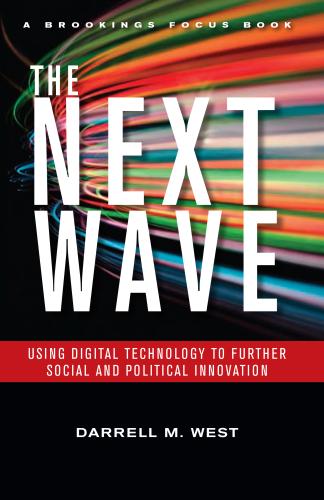

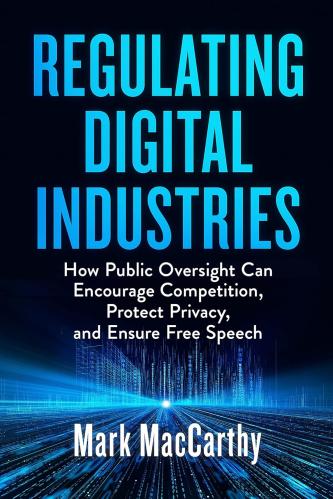
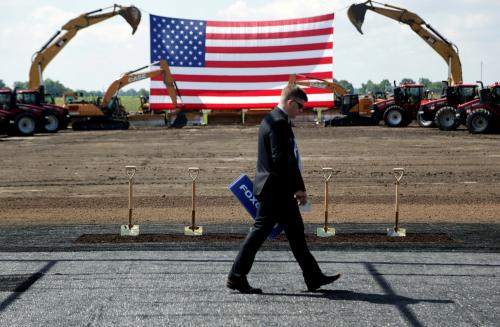
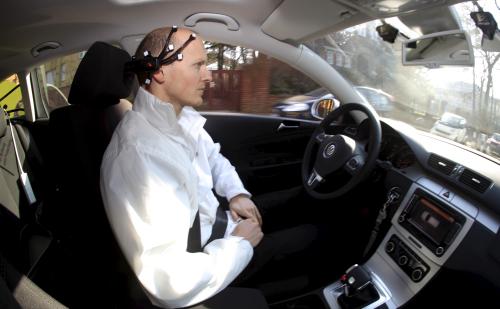
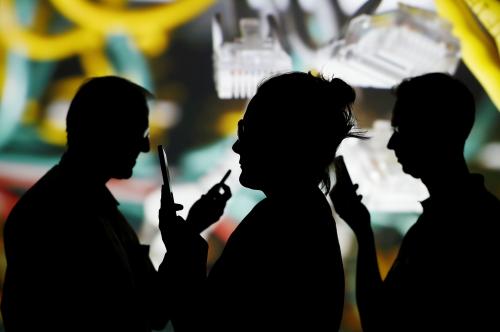

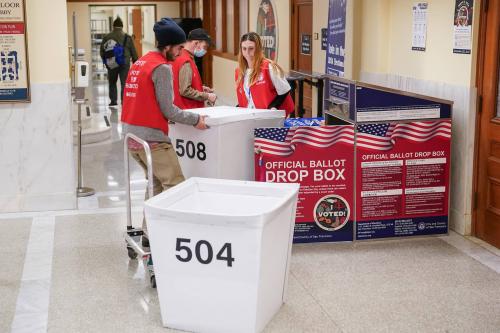
Commentary
Brookings survey finds 57 percent say they have seen fake news during 2018 elections and 19 percent believe it has influenced their vote
October 23, 2018